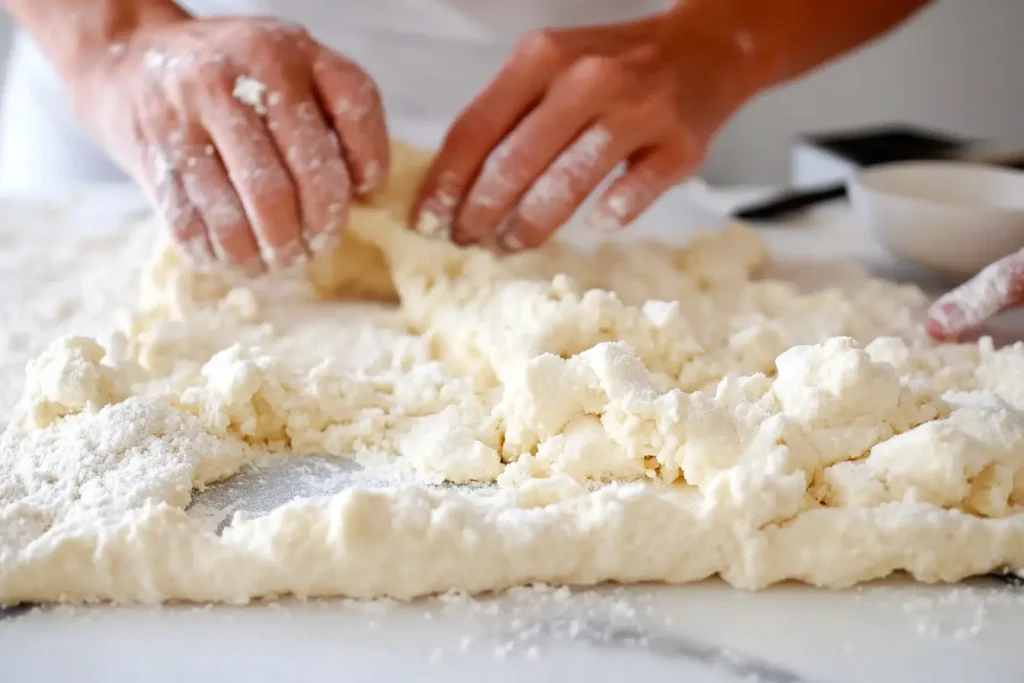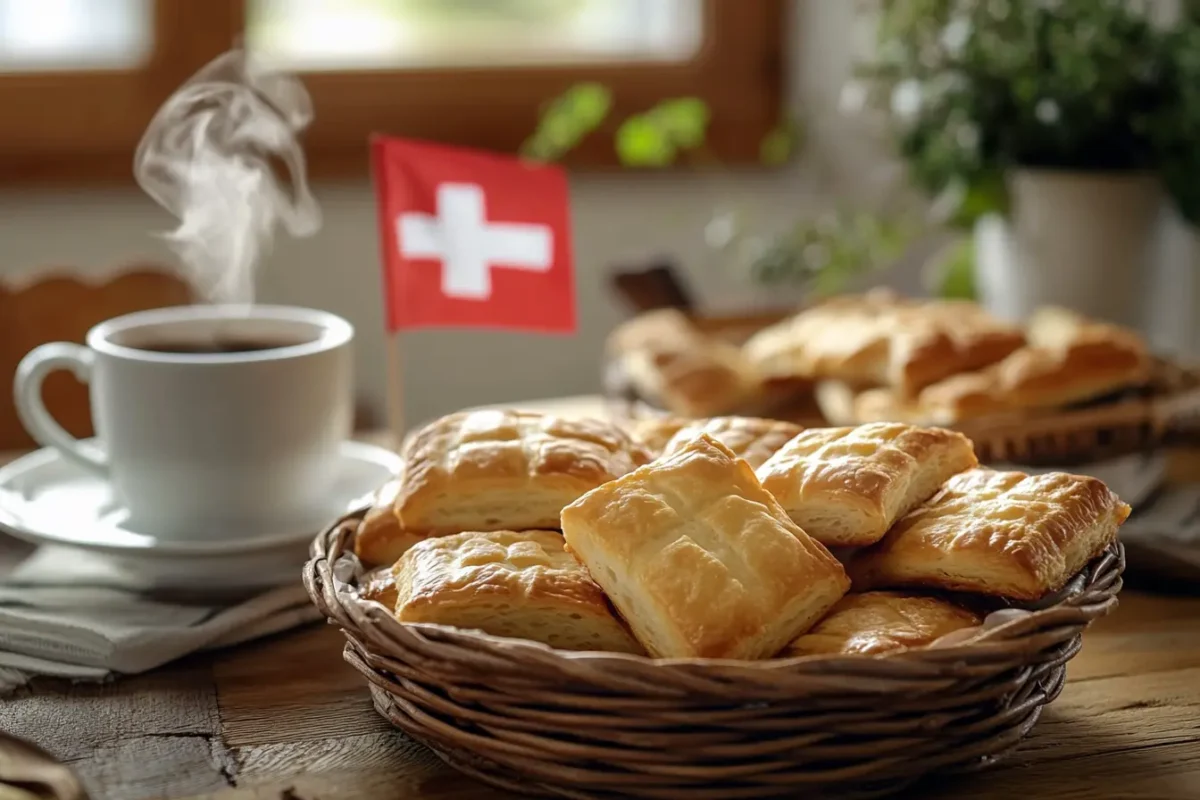Gipfeli, a beloved Swiss pastry, is much more than just a flaky delight—it’s a cultural gem that encapsulates the essence of European baking traditions. Whether you’re a seasoned baker or a curious foodie, this guide will walk you through everything you need to know about preparing and perfecting the gipfeli recipe. From its origins to step-by-step instructions and variations, you’ll gain the confidence to bring the taste of Switzerland right to your kitchen.
Let’s begin by exploring the roots and significance of this delectable pastry.
What Is the Gipfeli Recipe and Why Is It Unique?
The Origins of the Gipfeli Recipe
Gipfeli traces its roots back to Switzerland, where it became a staple in bakeries and households alike. Unlike its French cousin, the croissant, Gipfeli is often less buttery and slightly denser, making it uniquely Swiss. It reflects the Swiss penchant for simplicity and precision—qualities that shine in every golden, flaky bite. This pastry has evolved over centuries, influenced by neighboring cuisines but retaining its distinct identity.
How the Gipfeli Recipe Differs from Croissants
Many confuse Gipfeli with croissants, but there are key differences. Croissants are renowned for their buttery richness and airy texture, while Gipfeli are typically firmer and have a subtle sweetness. Additionally, Gipfeli dough is often made with less butter, which contributes to a more robust bite. This makes them versatile for both sweet and savory fillings, enhancing their appeal for every palate.
Cultural Significance of Swiss Gipfeli
In Switzerland, Gipfeli are more than just breakfast fare—they’re a symbol of warmth and hospitality. You’ll find them in Swiss bakeries, cafés, and homes, often served with coffee, tea, or even a glass of fresh milk. Sharing a basket of freshly baked Gipfeli is a cherished tradition, representing the comfort and connection of Swiss culture.
For more information about traditional European pastries, check out Allrecipes’ guide to European baking.
Essential Ingredients for the Perfect Gipfeli Recipe
The Must-Have Ingredients for Homemade Gipfeli
To make the perfect gipfeli recipe, having the right ingredients is critical. At its core, Gipfeli requires flour, butter, milk, yeast, sugar, and salt. High-quality butter is a must—it’s what gives these pastries their characteristic flaky texture. Whole milk adds richness, while the yeast ensures the dough rises just right. Use fine granulated sugar for a hint of sweetness, and don’t skimp on the salt—it balances the flavors beautifully.
If you’re interested in using Gipfeli in savory dishes, such as those paired with soups, check out this kielbasa and cabbage recipe for inspiration.
Ingredient Substitutions for Your Gipfeli Recipe
For those with dietary restrictions, substitutions are possible. Use plant-based butter and milk for a vegan alternative. Gluten-free flour blends can work, though they may slightly alter the texture. For a healthier twist, whole wheat flour can replace all-purpose flour, but be prepared for a denser result.
Where to Find the Best Ingredients for Gipfeli
Freshness matters in pastries. Purchase flour and butter from local markets to ensure they’re at their peak. Artisan grocery stores often stock the finest ingredients, and don’t overlook specialty baking shops for yeast or pastry-grade flour. For budget-friendly options, larger retailers often have everything you need in one place.
Must-Have Tools to Master Your Gipfeli Recipe
Basic Equipment for Making the Gipfeli Recipe
Creating a gipfeli recipe masterpiece requires a few essential tools. Start with a sturdy rolling pin for evenly spreading the dough. A pastry brush is indispensable for applying milk or egg wash to get that golden shine. Baking sheets lined with parchment paper ensure easy cleanup and prevent sticking. Lastly, a sharp knife or pizza cutter is necessary for slicing and shaping the dough.
Specialty Tools for Perfect Pastries
If you’re serious about your pastries, a dough scraper can help manage and shape the sticky dough. A kitchen scale is a baker’s best friend for precise measurements. For an extra crispy finish, invest in a baking stone or a high-quality baking mat. These tools might seem optional, but they take your Gipfeli to the next level.
Having the right tools at your fingertips simplifies the process and ensures your Gipfeli come out flawless.
Step-by-Step Guide to Making the Gipfeli Recipe at Home
Preparing the Dough
The foundation of any gipfeli recipe is its dough. Start by combining 3 cups of all-purpose flour, 2 tablespoons of sugar, and 1 teaspoon of salt in a large mixing bowl. In a separate bowl, dissolve 2 teaspoons of active dry yeast in ¾ cup of warm milk and let it sit until frothy—this activates the yeast. Gradually add the yeast mixture to the dry ingredients, followed by 3 tablespoons of softened butter. Mix until the dough forms, then knead on a floured surface for about 10 minutes until smooth.
Cover the dough with a damp cloth and let it rise in a warm place for about an hour, or until it doubles in size. This step ensures your pastries will have a light, airy texture.
Shaping the Gipfeli

Once the dough has risen, punch it down to release air bubbles and roll it out into a rectangle about ¼ inch thick. Using a sharp knife or pizza cutter, divide the dough into triangles. To shape each Gipfeli, roll the triangles tightly from the base to the tip, forming a crescent shape.
Proofing and Baking Tips
After shaping, place the Gipfeli on a parchment-lined baking sheet, leaving enough space between each pastry. Cover and let them proof for an additional 30 minutes. This second rise is crucial for achieving the perfect texture.
Before baking, brush the Gipfeli with an egg wash (1 egg mixed with a tablespoon of water) for that golden, glossy finish. Bake at 375°F (190°C) for 15–18 minutes, or until they turn a beautiful golden brown.
How to Achieve a Golden, Flaky Finish
For extra flakiness, ensure the butter is evenly distributed when preparing the dough. Chill the dough briefly before rolling it out if your kitchen is warm. And remember, don’t rush—each step, from proofing to baking, contributes to the pastry’s signature texture.
For more baking inspiration, check out our peach crumble recipe for a fruity twist on dessert-making!
Creative Variations of the Traditional Gipfeli Recipe
Sweet Gipfeli: Fillings and Toppings
A classic gipfeli recipe is a blank canvas for sweet creativity. Popular fillings include Nutella, fruit preserves, or almond paste. Simply spoon your desired filling onto the wide end of the dough triangle before rolling it up. For an indulgent topping, sprinkle sugar or slivered almonds over the egg wash before baking.
Savory Gipfeli: Popular Additions
Savory Gipfeli are equally irresistible and versatile. Try filling them with cheese, ham, or spinach for a hearty snack. For a Swiss-inspired twist, add a blend of Gruyère cheese and herbs. Sprinkle sesame or poppy seeds on top for added flavor and crunch.
Regional Twists on the Classic Recipe
Different regions of Switzerland have their own spin on Gipfeli. In some areas, you’ll find versions made with spelt flour for a nuttier flavor, or stuffed with seasonal ingredients like mushrooms or caramelized onions. Experiment with these variations to add a unique touch to your baking.
For more recipes that inspire creativity in the kitchen, explore our site for additional options that pair beautifully with Gipfeli. Whether you prefer them sweet or savory, these variations ensure there’s a Gipfeli for everyone. Stay tuned for the next part, where we’ll explore common mistakes to avoid!
Common Mistakes to Avoid When Making Gipfeli
Underproofing and Overproofing Issues
One of the most common errors in preparing a gipfeli recipe is misjudging proofing time. Underproofed dough won’t rise properly, leading to dense, chewy pastries. Overproofing, on the other hand, can cause the dough to collapse during baking. To avoid these pitfalls, follow proofing times carefully, and test the dough by gently pressing it with a finger. If it springs back slowly, it’s ready to bake.
Achieving the Right Consistency for the Dough
Consistency is everything when it comes to Gipfeli dough. Using too much flour can make the dough stiff, while too little can make it sticky and hard to handle. To strike the right balance, add flour gradually and adjust based on the dough’s texture. If the dough sticks to your hands, lightly dust with additional flour, but don’t overdo it.
Baking Temperature and Timing Errors
Another critical factor is baking at the correct temperature for the right amount of time. Too low a temperature can result in undercooked pastries, while too high a temperature might burn the tops before the insides are fully cooked. Use an oven thermometer to ensure accuracy and rotate your baking sheet halfway through for even browning.
Serving and Storing Gipfeli
Best Ways to Serve Gipfeli

Gipfeli are best enjoyed fresh from the oven when they’re still warm and flaky. Pair them with a steaming cup of coffee, tea, or hot chocolate for a classic Swiss breakfast. For a sweet treat, dust them with powdered sugar or serve with a dollop of jam or whipped cream. If you’ve prepared savory Gipfeli, consider serving them alongside a light soup or salad.
Storage Tips for Freshness
While Gipfeli are undeniably best on the day they’re baked, you can store leftovers in an airtight container at room temperature for up to two days. To maintain their crispness, reheat them in the oven at a low temperature for a few minutes. If you’ve made a large batch, freeze unbaked Gipfeli after shaping, and bake them fresh when needed—just add a few extra minutes to the baking time.
With these tips, you can savor every bite of your gipfeli recipe creations, whether fresh or reheated. Ready for more Swiss culinary adventures? Stay tuned for the FAQs and conclusion in the next sections!
FAQs About Gipfeli
What Makes Gipfeli Different from Regular Croissants?
Though they might look similar, Gipfeli and croissants have distinct characteristics. Croissants are famously buttery and flaky, while Gipfeli are slightly firmer and less rich, making them more versatile for both sweet and savory applications. The dough for a gipfeli recipe often uses less butter and sugar, resulting in a simpler but equally delightful pastry.
Can Gipfeli Be Frozen?
Yes, Gipfeli freeze beautifully! If you want to prepare them in advance, shape the dough into crescents, place them on a baking sheet, and freeze. Once frozen solid, transfer them to a freezer-safe bag or container. When ready to bake, allow the Gipfeli to thaw and proof before popping them into the oven. This method ensures you always have fresh, homemade Gipfeli on hand.
What Fillings Work Best with Gipfeli?
The beauty of a gipfeli recipe lies in its adaptability. Sweet fillings like jam, chocolate, or marzipan are classic choices. For savory variations, try cheese, ham, or spinach. Get creative with regional ingredients or your personal favorites to craft Gipfeli that suit your taste.
How Can I Make My Gipfeli Extra Flaky?
For an ultra-flaky finish, work quickly with chilled butter and avoid overhandling the dough. Layering the butter evenly throughout the dough during preparation is key. Additionally, ensure the pastries are well-proofed before baking, as this step helps develop their airy texture.
Conclusion: Why Gipfeli Deserves a Spot on Your Table
Gipfeli are more than just a pastry—they’re a bite-sized piece of Swiss culture that’s simple to make and even easier to enjoy. Whether you’re following a traditional gipfeli recipe or experimenting with creative fillings, these pastries are a perfect way to bring a touch of Europe to your kitchen.
From their versatile nature to their flaky, golden crust, Gipfeli are ideal for any occasion—be it a relaxed weekend breakfast, a cozy afternoon snack, or even a special treat for guests. By learning how to make these at home, you’ll not only gain baking skills but also a deeper appreciation for Swiss culinary traditions.
So roll up your sleeves, preheat that oven, and let the aroma of fresh Gipfeli fill your home. Happy baking!

